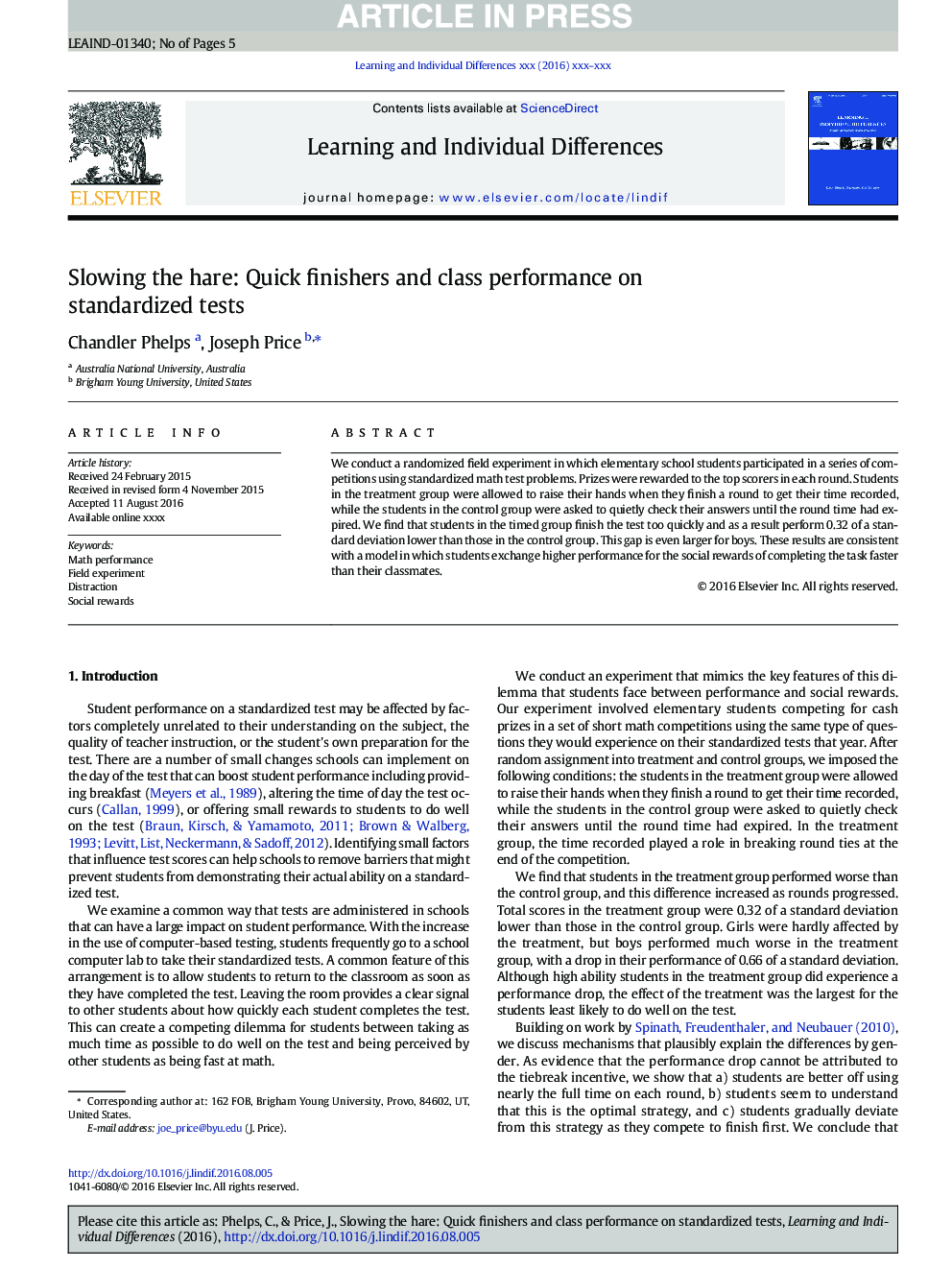| کد مقاله | کد نشریه | سال انتشار | مقاله انگلیسی | نسخه تمام متن |
|---|---|---|---|---|
| 4940128 | 1436372 | 2016 | 5 صفحه PDF | دانلود رایگان |
عنوان انگلیسی مقاله ISI
Slowing the hare: Quick finishers and class performance on standardized tests
ترجمه فارسی عنوان
کم کردن زوج: سریعتر شدن و عملکرد کلاس در آزمونهای استاندارد
دانلود مقاله + سفارش ترجمه
دانلود مقاله ISI انگلیسی
رایگان برای ایرانیان
کلمات کلیدی
عملکرد ریاضی، آزمایش میدانی، حواس پرتی، پاداش های اجتماعی،
ترجمه چکیده
ما یک آزمایش میدانی تصادفی انجام دادیم که دانش آموزان ابتدایی در یک سری مسابقات با استفاده از مسائل آزمون ریاضی استاندارد شده شرکت کردند. جایزه ها در هر دور به بهترین بازیکنان اهدا شد. دانش آموزان در گروه درمان اجازه دادند دستان خود را پس از پایان دادن به یک دور برای ثبت زمان خود مجاز بدست آورند، در حالی که دانش آموزان گروه کنترل خواسته بودند بی درنگ پاسخ های خود را بررسی کنند تا زمانی که دور باقی مانده بودند. ما دریافتیم که دانش آموزان در گروه بهنگار، سریعتر به پایان رسید و در نتیجه 0.32 انحراف استاندارد کمتر از گروه کنترل است. این شکاف برای پسران حتی بزرگتر است. این نتایج با یک مدل سازگار است که در آن دانش آموزان بالاترین عملکرد را برای پاداش اجتماعی تکمیل کار سریعتر از همکلاسی های خود می پردازند.
موضوعات مرتبط
علوم انسانی و اجتماعی
روانشناسی
روانشناسی رشد و آموزشی
چکیده انگلیسی
We conduct a randomized field experiment in which elementary school students participated in a series of competitions using standardized math test problems. Prizes were rewarded to the top scorers in each round. Students in the treatment group were allowed to raise their hands when they finish a round to get their time recorded, while the students in the control group were asked to quietly check their answers until the round time had expired. We find that students in the timed group finish the test too quickly and as a result perform 0.32 of a standard deviation lower than those in the control group. This gap is even larger for boys. These results are consistent with a model in which students exchange higher performance for the social rewards of completing the task faster than their classmates.
ناشر
Database: Elsevier - ScienceDirect (ساینس دایرکت)
Journal: Learning and Individual Differences - Volume 51, October 2016, Pages 322-326
Journal: Learning and Individual Differences - Volume 51, October 2016, Pages 322-326
نویسندگان
Chandler Phelps, Joseph Price,
